U.S. Supreme Court bans discrimination based on sexual orientation or gender identity: 5 Tips for Employers
June 16, 2020
By: Brittany E. Bennett, Esq.
The U.S. Supreme Court on recently ruled that employment discrimination on the basis of sexual orientation or gender identity is prohibited under federal civil rights law.
Title VII of the 1964 Civil Rights Act prohibits discrimination in the workplace on the basis of race, religion, national origin and sex. The Supreme Courts ruling confirms that “sex” includes sexual orientation. In the majority opinion, Justice Neil Gorsuch, wrote that “An employer who fires an individual for being homosexual or transgender fires that person for traits or actions it would not have questioned in members of a different sex. Sex plays a necessary and distinguishable role in the decision, exactly what Title VII forbids.”
Sexual orientation discrimination in the workplace occurs when an employee is subjected to negative employment action, harassment, or denial of certain benefits because of their sexual orientation. Although employers cannot guard against every employee’s actions or conduct toward another employee, there are steps every employer can take to reduce the risk of liability for sexual orientation discrimination or harassment. It’s no secret that some discrimination suits are be brought against employers by disgruntled employees who are looking for a way to retaliate against an employer. Here are a few tips for employers to reduce risk of liability.
- Implement Nondiscriminatory Hiring/Firing Practices.
Employers should ensure that hiring and firing practices on not based on sexual orientation of an applicant or employee. In addition, employers should implement policies and training practices to educate employees on what could be considered discrimination based on sexual orientation. Although the Supreme Court has made it clear that “sex” includes “sexual orientation” the factual scenarios that could be considered discriminatory or related to sexual orientation or gender identity could be endless.
The infinite factual settings could open many employers up to more liability. The way to minimize the risk of liability is to make sure that hiring and firing decisions are made without considering the sexual orientation or gender identity of an applicant or employee. This will reduce risk of liability and ensure a nondiscriminatory workplace.
- Ensure Other Benefits are not Based on Sexual Orientation.
In addition to hiring and firing, employers should make sure wages, promotions, and other company benefits are not based on sexual orientation or gender identity of an employee. Many employers dole out raises, bonuses, and vacation time based on performance or years of tenure. These benefits should be based solely on nondiscriminatory factors and employers should take it a step further and avoid any appearances of discrimination. One-way employers can accomplish this is to pay employees by job title and tenure.
- Train Employees.
Employees should be instructed on the type of behavior that could be considered discrimination or harassment based on sexual orientation or gender identity of another employee. Although many forms of discrimination or harassment are obvious, many others are not.
For example, jokes or slurs about sexual orientation may be considered a form of harassment, which courts have held is a form of discrimination under the law. However, federal law and the laws of most states does not prohibit simple teasing, offhand comments, or isolated incidents that are not extremely serious. The conduct must be sufficiently frequent or severe to create a hostile work environment or result in a “tangible employment action,” such as hiring, firing, promotion, or demotion.
An employer may have employees that do not intend to discriminate or harass another, but the EEOC or a court may find otherwise depending on the circumstances. The best way to handle this is to make sure employees know and understand what could be considered discrimination or harassment so they can avoid this conduct.
- Encourage Communication.
No matter how large or small the employer is, employees should be encouraged to talk to their supervisors if they are having a problem. If an employee is being discriminated against or harassed because of his/her sexual orientation but does not feel comfortable approaching a supervisor, the discrimination or harassment could continue. Not only does this result in a bad situation for the employee, but it also increases the risk of liability for the employer.
An employer should have an open-door policy that encourages employees to talk to their supervisor if any problem arises in the workplace. This will allow employers to take action if necessary and respond quickly to eliminate discrimination or harassment. Swift action also reduces risk of liability.
- Document Company Policy Violations.
In a discrimination suit, an employer must be able to show a nondiscriminatory reason for an employment decision. If an employer does not give warnings and other forms of disciplinary action in writing, it could be very difficult to show the Equal Employment Opportunity Commission or a court that an employee was fired or not promoted for a reason other than the reason that the employee is claiming.
Disciplinary action in written form memorializes the reasons for an adverse employment decision. For example, if an employee arrives to work late repeatedly and refuses to wear the proper uniform, he or she will likely be fired. Now let’s assume that this same employee is also a member of the LBGTQ community and brings a discrimination suit against the employer after being fired. He claims that he was fired for his sexual orientation. The employer knows that the employee was fired for tardiness and insubordination as described above, but the employer never reduced any disciplinary action to writing. This makes the case a “he said she said” scenario. If the employer would have documented the tardiness and insubordination, then it would have these documents to show the Equal Employment Opportunity Commission or the court a nondiscriminatory reason for firing the employee.
If you are an employer and have more questions about the recent Supreme Court ruling or best employment practices, consult with an employment law attorney today!








